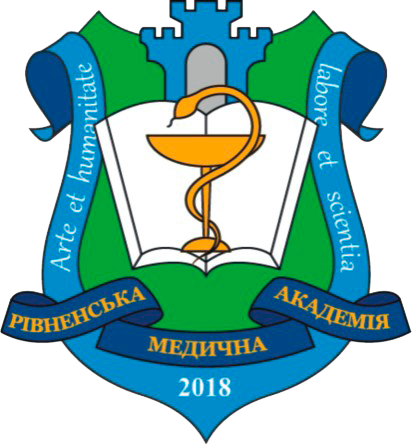ASSESSING THE SUITABILITY OF THE METHOD FOR THE QUANTITATIVE DETERMINATION OF SODIUM HYALURONATE IN MEDICAL DEVICES OF INJECTABLE IMPLANTS
DOI:
https://doi.org/10.32782/health-2024.2.15Keywords:
validation, analytical technique, quantitative definition, hyaluronic acid, sodium hyaluronate, medical products.Abstract
One of the most common and most popular medical device are injectable implants based on hyaluronic acid. Such prevalence is due to a wide range of properties of sodium hyaluronate, which have found their application in many fields of medicine, such as cosmetology, ophthalmology, surgery, dermatology, etc. Given that the above-mentioned products are medical devices of the highest risk class, it is critically necessary for each manufacturer to conduct quality control of finished products according to defined quality characteristics. One of the key characteristics of the quality of a medical device is the quantitative content of sodium hyaluronate as the main component, which depends on the effectiveness of the product. To control the quantitative content of sodium hyaluronate, the method described in the European Pharmacopoeia for the substance sodium hyaluronate was chosen. This article demonstrates the process of validation of the method of quantitative determination of sodium hyaluronate by the method of absorption spectrophotometry in the ultraviolet region in the line of medical devices for injectable implants based on un-crosslinked hyaluronic acid 1.1%, 18%, 2.2%, 2.5%, 3,3%. The purpose of the validation is to confirm the possibility of using this technique to determine sodium hyaluronate in the gel of the injectable implant, which contains a number of auxiliary substances. The authors present the obtained experimental data, validity criteria and statistical calculations that demonstrate the validity of the technique in the studied conditions and the possibility of its use for the determination of sodium hyaluronate in the finished medical device.
References
Wenbin Liu, Mengxi Ma, Zehua Lei, Zihuan Hiong, Tenggui Tao, Pengfei Lei, Ige Gu, Hulin Yang, Yun Hiao (2022). Intra-articular injectable hydroxypropyl chitin/hyaluronic acid hydrogel as bio-lubricant to attenuate osteoarthritis progression. Materials & Design. 110579. DOI: https://doi.org/10.1016/j.matdes.2022.110579.
John W. Belk B.A., Joseph J. Lim, Carson Keeter M.S., Patrick C. McCulloch M.D., Darby A. Houck B.A., Eric C. McCarty M.D., Rachel M. Frank M.D., Matthew J. Kraeutler M.D. (2023) Patients with Knee Osteoarthritis Who Receive Platelet-Rich Plasma or Bone Marrow Aspirate Concentrate Injections Have Better Outcomes Than Patients Who Receive Hyaluronic Acid: Systematic Review and Meta-analysis. Arthroscopy: The Journal of Arthroscopic & Related Surgery. 39, 1714-1734. DOI: 10.1016/j.arthro.2023.03.001.
Alberto Gobbi, Macarena Morales, Giulia Avio, Riccardo D’Ambrosi (2022). Double-blinded prospective randomized clinical trial in knee joint osteoarthritis treatment: safety assessment and performance of trehalose hyaluronic acid versus standard infiltrative therapy based on medium-weight sodium hyaluronate. Journal of Cartilage & Joint Preservation. 100043. DOI: https://doi.org/10.1016/j.jcjp.2022.100043.
Vineet Kumar Rai, Ivy Saha, Mahboob Alam, Kumar Nishchaya, Goutam Ghosh, Goutam Rath (2023). Microneedle arrays for cutaneous and transcutaneous drug delivery, disease diagnosis, and cosmetic aid. Journal of Drug Delivery Science and Technology. 79, 104058. DOI: https://doi.org/10.1016/j.jddst.2022.104058.
Yusuke Shimizu, Edward Hosea Ntege, Hiroshi Sunami (2022). Current regenerative medicine-based approaches for skin regeneration: A review of literature and a report on clinical applications in Japan. Regenerative Therapy. 21, 73–80. DOI: https://doi.org/10.1016/j.reth.2022.05.008.
Alexander Huynh, Ronny Priefer (2020). Hyaluronic acid applications in ophthalmology, rheumatology, and dermatology. Carbohydrate Research. 489, 107950. DOI: https://doi.org/10.1016/j.carres.2020.107950.
Danny J. Soares, Giancarlo F. Zuliani (2022). Orbital post-septal hyaluronic acid: An iatrogenic etiology compounding lower eyelid steatoblepharon. JPRAS Open. 34, 173–177. DOI: 10.1016/j.jpra.2022.09.010.
Antonio J. Mateo-Orobia, Eduardo del Prado Sanz, Alejandro Blasco-Martínez, Luis E. Pablo-Júlvez, Sarah Farrant, Frédéric Chiambaretta (2023). Efficacy of artificial tears containing trehalose and hyaluronic acid for dry eye disease in women aged 42–54 versus ≥ 55 years. Contact Lens and Anterior Eye. 26, 101845. DOI: https://doi.org/10.1016/j.clae.2023.101845.
Постанова від 2 жовтня 2013 р. № 753 Про затвердження Технічного регламенту щодо медичних виробів.
European Pharmacopoeia (Ph. Eur.) 11th Edition. URL: https://www.edqm.eu/en/european-pharmacopoeia-ph.-eur.- 11th-edition. (Date of access: 23.04.2024).
Державна Фармакопея України : в 3 т. / ДП «Український науковий фармакопейний центр якості лікарських засобів». 2–ге вид. Харків : ДП «Український науковий фармакопейний центр якості лікарських засобів», 2015. Т. 1. 1128 с.
Orlenko, D., Yakovenko, V., Plastun, V., & Vyshnevska, L. (2020). Development and validation of methods for quantitative determination of sodium hyaluronate in the composition of combined dental gel. Eureka: Health Sciences, 5, 72–81. https://doi.org/10.21303/2504-5679.2020.001420.
Kandasamy, Ruckmani & Shaikh, Saleem & Khalil, Pavne & Muneera, M.S. & Thusleem, O.A. (2013). Determination of sodium hyaluronate in pharmaceutical formulations by HPLC–UV. Journal of Pharmaceutical Analysis. 3. 324–329. 10.1016/j.jpha.2013.02.001.
Çağlar EŞ, Üstündağ Okur N, Karasulu HY (2022). Development and validation of an HPLC method for the determination of hyaluronic acid active substance in pharmaceutical formulations. J Res Pharm. 26(1): 112-122
Chang, Wan-Hsin, Liu, Pei-Yi, Jiang, Yuan-Ting, Hsu, Howard Yuan-Hao (2020). A Sensitive Chromatographic Method for Hyaluronate Quantification Applied to Analyze the Desorption Behavior on Contact Lenses,Current Pharmaceutical Analysis, 16(6), 782-791, DOI: 10.2174/1573412915666190304142952.
Sze JH, Brownlie JC, Love CA(2016). Biotechnological production of hyaluronic acid: a mini review. 3 Biotech. 6(1), 67. DOI: 10.1007/s13205-016-0379-9.





